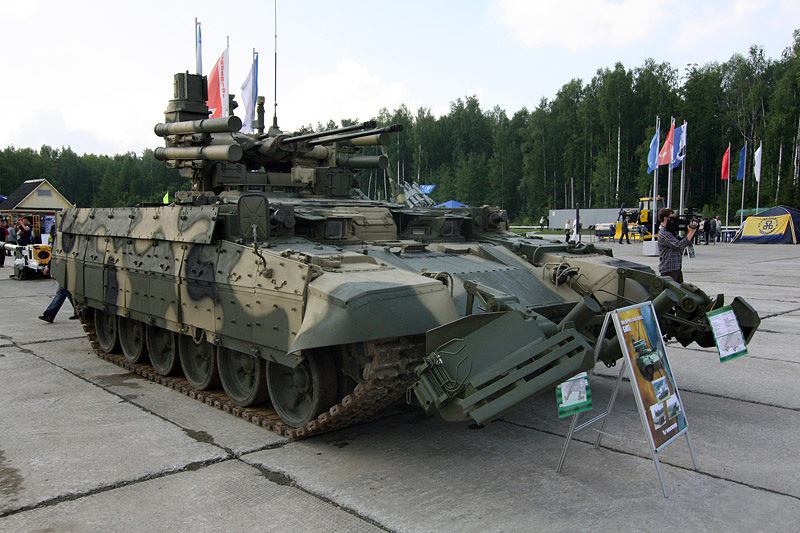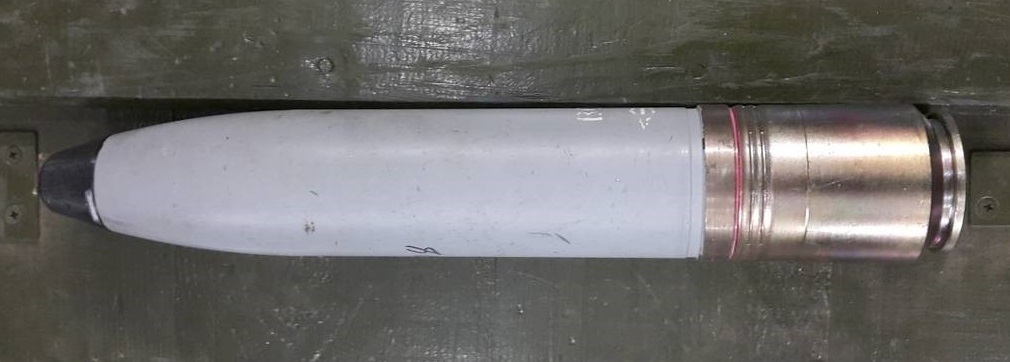- Joined
- 9 October 2009
- Messages
- 21,976
- Reaction score
- 13,636
http://en.ria.ru/military_news/20130925/183720985/Russia-Unveils-Terminator-2-Tank-Support-Vehicle.html
EDIT hoto added from link)
hoto added from link)
EDIT
Unlike the first generation BMPT that was produced as a new vehicles, rolling off the T-72 production line, BMPT72 is converted from the T-72 platforms that are withdrawn from service,thus offering a cost effective solution for military forces that are already operating over 20,000 T-72 platforms.
Arguably that's what the infantry and IFVs can doI increasingly like the concept of vehicles like the BMPT to support the MBTs, I just wonder what represents the better primary armament for them? Two autocannons like the 30mm 2A42s on it? Or a larger caliber perhaps like 57mm or even 76mm? Even if you stay with the smaller caliber does having two versus one 30mm really count for anything in this vehicle's role?
Even if you stay with the smaller caliber does having two versus one 30mm really count for anything in this vehicle's role?
The history of the BMPT's development can be traced back to the Soviet–Afghan War. Combat experience during the lengthy war revealed that infantry fighting vehicles (IFVs) like the BMP-1 and BMP-2 cannot fully deal with infantry, despite the BMP-2's high gun elevation. Although main battle tanks (MBTs) possessed a high amount of firepower, the limited elevation and depression angles of the main gun made them easy targets in mountainous and urban terrain.
The need for such a vehicle became even more evident during the First Chechen War. When using conventional armor during urban engagements, Russian forces suffered heavy losses in manpower and equipment, including the destruction of an entire mechanized brigade during the First Battle of Grozny. While these losses cannot be entirely blamed on technology, it became clear that a dedicated anti-personnel fighting vehicle would provide valuable assistance in an urban environment. Self-propelled anti-aircraft guns were used as a temporary solution in Chechnya. However, these vehicles were not well-armored and did not possess the obstacle-clearing capabilities of an MBT.

I think the terminator might lead to a dangerous notion of needing less troop support. That would be a major blunder to fall into. That said what makes this different from any old IFV is the ammunition load and armor package. It can sit and fire for much longer in potentially more dangerous situations. At least imo
Per wiki: "One of the guns fires armor-piercing rounds while the other fires anti-personnel rounds."I increasingly like the concept of vehicles like the BMPT to support the MBTs, I just wonder what represents the better primary armament for them? Two autocannons like the 30mm 2A42s on it? Or a larger caliber perhaps like 57mm or even 76mm? Even if you stay with the smaller caliber does having two versus one 30mm really count for anything in this vehicle's role?
Arguably that's what the infantry and IFVs can doI increasingly like the concept of vehicles like the BMPT to support the MBTs, I just wonder what represents the better primary armament for them? Two autocannons like the 30mm 2A42s on it? Or a larger caliber perhaps like 57mm or even 76mm? Even if you stay with the smaller caliber does having two versus one 30mm really count for anything in this vehicle's role?

 forum.cartridgecollectors.org
forum.cartridgecollectors.org
